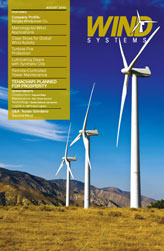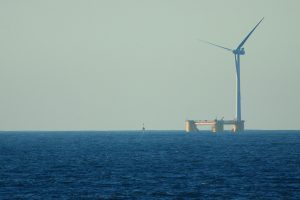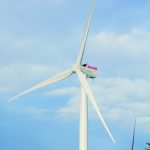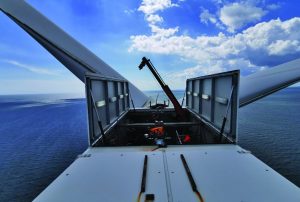Turbine manufacturers typically offer a turbine availability guarantee during warranty at 97 percent, and well-maintained projects with the right technology can achieve levels higher than this whether they are covered under warranty or not. In achieving these levels the operator must have a close relationship with the turbines, not only with adept skills in preventative maintenance but also to properly identify and correct potential failures that may impact the turbine’s ability to reliably generate power. Remote monitoring, particularly in conducting diagnostics and turbine resets, plays an important role in this effort.
With a modern, MW-class project in the 100 MW range, each percentage point of availability can be worth between $300-500k of revenue per year. Due to the remote location of wind projects and turbine height considerations, it is relatively expensive to visit turbines for maintenance and repair on a regular basis and historically a preventative maintenance approach is utilized in the wind industry. Turbines operate for months between scheduled maintenance visits, all the while being remotely monitored, reset, and diagnosed when performance is out of norm. While for most turbines only a few main vital faults will require an on-the-ground response from technicians, most other faults can be reset remotely, or in many instances automatically by the turbine’s own control system. The interface between a remote monitoring center and the operator is critical in identifying the severity of faults, understanding the consequence of the fault, and linking the physical condition of the turbine and its environment to the data itself. There is an intensity in which a turbine can progress from minor indications of faults to near catastrophic failure.
Nearly all OEMs offer centralized remote monitoring and diagnostic services for their turbines under warranty, and many asset management companies and utilities with wind projects generally have 24/365 facilities to monitor the projects themselves. Others that do not fall under either of these scenarios may contract with third party remote monitoring companies to provide such service. Proof abounds, however, that having a remote monitoring and diagnostic center does not always translate into higher levels of performance. A few reasons for this may be the disproportionate size of the projects being monitored, the ability to diagnose and correct problems remotely, lack of training or knowledge of turbine characteristics, and the inability to easily communicate between the remote center and the operator. A closer look at the interface between the remote monitoring group and the operator should be considered for any project that is failing to meet high performance targets.
As unscheduled maintenance visits can account for upwards of 70 percent of the total wind turbine maintenance costs, preventive visits and major planned overhauls account for only about 20 and 10 percent, respectively. Reducing unscheduled maintenance costs and achieving higher levels of availability can be accomplished through a better understanding of operating data and a more intimate relationship between the remote operations team and the operator. One leading U.S. wind asset management company has a credible process for ensuring the association of information between the two; when a technician has completed his field inspection to reset a fault, he is required to inform the remote operator of his findings. This information is entered into an electronic database, linking the fault to the physical condition of the turbine. Both parties benefit from the information exchange as they no longer have a disconnect between the data and the actual environment. Through a collaborative effort that promotes the finding of root cause for turbine faults, recurring events can actually be decreased.
Continuing to maintain high levels of project performance means an organization must work efficiently together, with the capability to transform large amounts of remote monitoring data into actionable information for the project operator. Properly communicated, such information will allow operators to make service interventions that prevent catastrophic failure, perform inspections that are prioritized and accurately focused, and optimize maintenance scheduling and costs. When properly implemented these combined services can significantly increase uptime, improve availability, and even extend the life of the turbines.



































